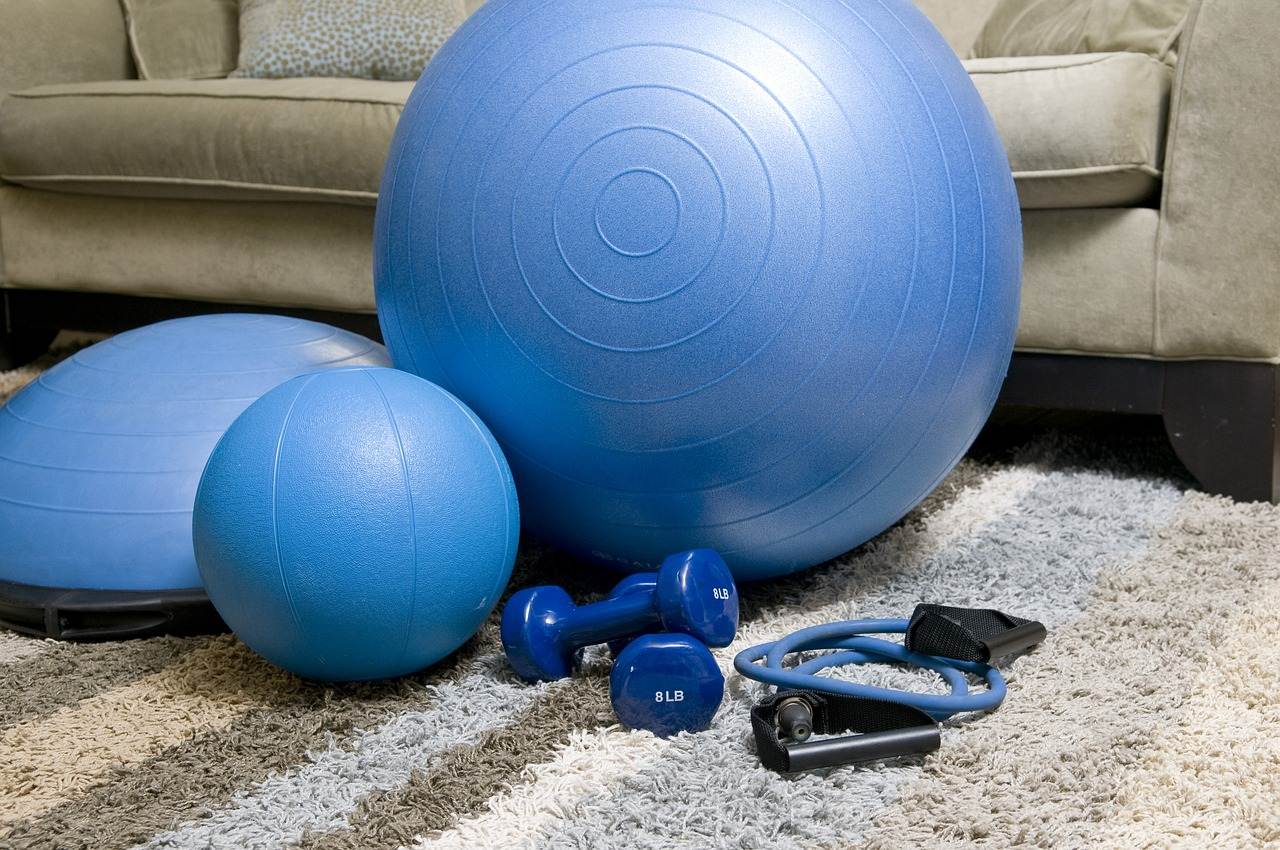Overall, home workouts offer a level of flexibility and convenience that cannot be matched by going to the gym. With the right knowledge and equipment, you can achieve your fitness goals from the comfort of your own home. In the following sections, I will provide tips and advice for starting with home workouts, understanding workout basics, and exploring different home workouts.
Key Takeaways
- Home workouts offer convenience, flexibility, and cost savings over going to the gym.
- Understanding workout basics, including proper form and targeting specific muscle groups, is crucial for success.
- Various exercises, including bodyweight and equipment-based, can create a customized workout program at home.
The Importance of Home Workouts
As someone who has been working out at home for years, I can confidently say that home workouts are a great way to improve your health and fitness. There are many benefits to working out at home, including convenience, cost-effectiveness, and the ability to customize your workouts to your specific needs.
One of the biggest benefits of home workouts is that they can help you lose weight and improve your overall health. By exercising regularly, you can increase your metabolism, burn calories, and improve your cardiovascular health. This can reduce your risk of heart disease, stroke, and other chronic health conditions.
Another benefit of home workouts is that they can be tailored to your fitness goals. Whether you want to build muscle, improve your endurance, or stay active, there are countless exercises and workout routines that you can do at home. You can also adjust the intensity and duration of your workouts to suit your needs, making it easier to stick to a consistent exercise routine.
Home workouts are also cost-effective, as you don’t need to pay for a gym membership or expensive exercise equipment. With just a few pieces of basic equipment, such as dumbbells, resistance bands, and a yoga mat, you can create a complete home gym that will allow you to perform a wide range of exercises.
In conclusion, home workouts are a great way to improve your health, lose weight, and stay active. By exercising regularly and customizing your workouts to your specific needs, you can achieve your fitness goals and enjoy all the benefits of a healthy, active lifestyle.
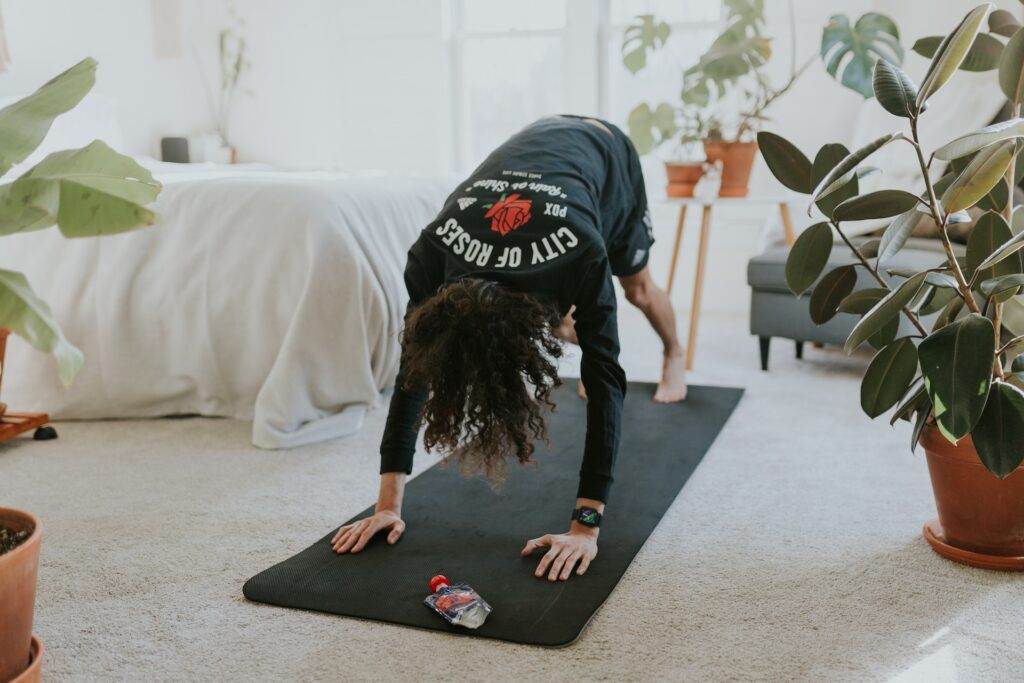
Getting Started with Home Workouts
As someone who has been working out at home for a while, I can tell you that it’s a great way to stay fit and healthy without going to a gym. However, it can be a bit overwhelming if you’re new to home workouts. Here are a few tips to help you get started:
Determine Your Level
The first thing you need to do is determine your fitness level. If you’re a beginner, you’ll want to start with some basic exercises that are easy to do and won’t put too much strain on your body. As you progress, you can add more challenging exercises to your routine. Remember to listen to your body and don’t push yourself too hard.
Warm Up
Before you start your workout, it’s important to warm up. This will help prevent injury and prepare your body for the exercises you’ll be doing. A good warm-up should last at least 5-10 minutes and include some light cardio, such as jogging in place or jumping jacks, as well as dynamic stretches.
Choose Your Workout
You can do many different workouts at home, from bodyweight exercises to yoga to cardio routines. Choose a workout that you enjoy, and that fits your fitness goals. You can find plenty of free workout videos online, or you can create your own routine using familiar exercises.
Start Slow
When you’re starting out, it’s important to take it slow. Don’t try to do too much too soon, or you’ll risk injury or burnout. Start with a short workout, such as 10-15 minutes, and gradually increase the length and intensity as you get stronger.
Stay Consistent
Consistency is key when it comes to home workouts. Make a plan to work out several times weekly, and stick to it. Even if you can only do a short workout, it’s better than nothing. Over time, you’ll see improvements in your fitness level and overall health.
Understanding Workout Basics
When it comes to working out at home, it’s important to understand the basics of a workout. As someone who has been working out for years, I can confidently say that understanding these basics will help you achieve your fitness goals.
Exercises
Exercises are the foundation of any workout. They are movements that target specific muscles and help you build strength, endurance, and flexibility. Some common exercises that you can do at home include push-ups, squats, lunges, and planks.
Workout
A workout is a series of exercises you perform in a specific order. The order in which you perform the exercises can significantly impact your results. For example, if you’re looking to build strength, you should first perform exercises targeting the major muscle groups.
Sets and Reps
A set is a group of repetitions of an exercise. For example, if you perform ten push-ups, that would be one set of push-ups. Reps, however, refer to the number of times you perform an exercise in a set. For example, if you perform ten push-ups, that would be ten reps.
Rest and Rest Periods
Rest is an essential part of any workout. Giving your muscles time to recover between sets and exercises is important. Rest periods can vary depending on your fitness level and the type of workout you’re doing. Generally, you should rest for 30 to 90 seconds between sets.
Major Muscles
Understanding the major muscles in your body is important when it comes to designing an effective workout. The major muscle groups include the chest, back, shoulders, biceps, triceps, abs, and legs. You can build strength and improve your overall fitness by targeting these muscle groups in your workout.
In summary, understanding the basics of a workout can help you achieve your fitness goals. By incorporating exercises that target the major muscle groups, performing sets and reps, and giving your muscles time to rest, you can design an effective workout that will help you build strength, endurance, and flexibility.
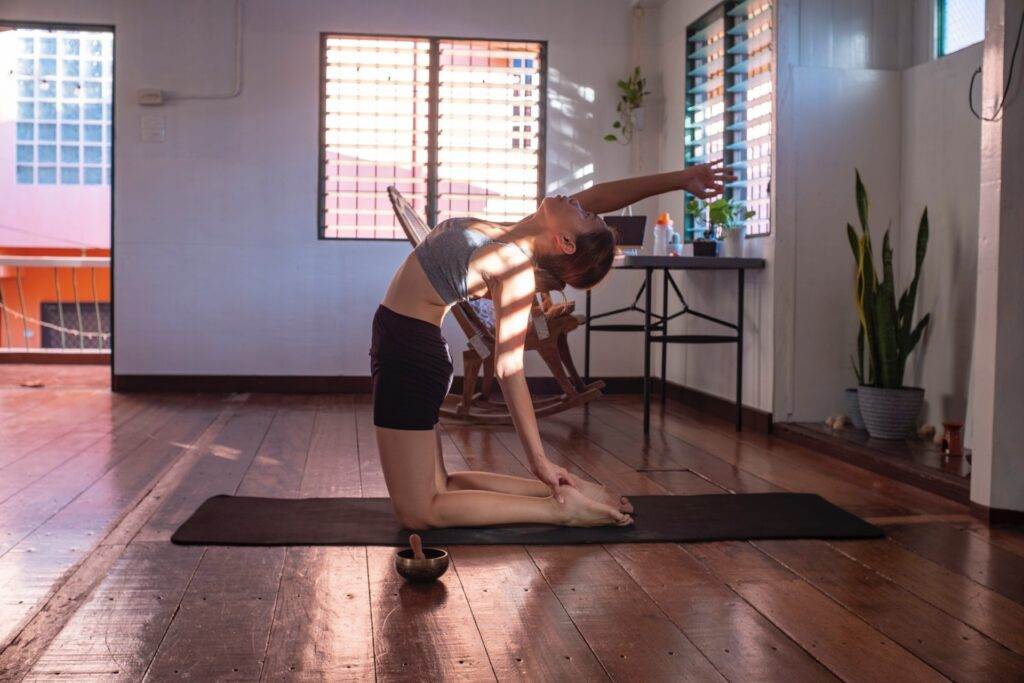
Types of Home Workouts
When it comes to working out at home, plenty of options are available. Here are some of the most popular types of home workouts to consider:
Strength Training
Strength training is an excellent way to build muscle and improve overall fitness. You can use resistance bands, dumbbells, or even your body weight to get a great strength workout at home.
Cardio
Cardiovascular exercise is essential for heart health and can help burn calories and improve endurance. Some popular home cardio workout options include jumping jacks, running in place, or using a jump rope.
High-Intensity Interval Training (HIIT)
HIIT workouts involve short bursts of intense exercise followed by periods of rest. These workouts are great for burning calories and improving cardiovascular fitness. You can incorporate bodyweight exercises, like burpees or mountain climbers, into your HIIT routine.
Pilates
Pilates is a low-impact workout focusing on building core strength and improving flexibility. You can use a mat or a Pilates ball to do exercises like the plank or the Pilates bridge.
Yoga
Yoga is another low-impact workout that can help improve flexibility, balance, and strength. There are many different types of yoga, including vinyasa, Hatha, and restorative.
Full-Body Workout
A full-body workout is a great way to target all the major muscle groups in one session. You can use a combination of bodyweight exercises and equipment, like resistance bands or dumbbells, to get a full-body workout at home.
Total Body Workout
Like a full-body workout, a total-body workout targets all the major muscle groups. However, total body workouts may include cardio or HIIT exercises to increase calorie burn and improve cardiovascular fitness.
High-Intensity Workouts
High-intensity workouts are great for burning calories and improving overall fitness. You can incorporate high-intensity exercises, like squat jumps or burpees, into your routine to get a challenging workout at home.
Overall, there are many types of home workouts to choose from. Whether you prefer strength training, cardio, or yoga, there is a workout that can help you achieve your fitness goals.
Bodyweight Exercises
Bodyweight exercises are a great way to build strength and improve fitness without needing equipment. They are perfect for those who prefer to work out at home or are on a tight budget. Here are some of the best bodyweight exercises that you can do at home:
Push-Ups
Push-ups are a classic exercise that works the chest, triceps, and shoulders. To perform a push-up, start in a plank position with your hands shoulder-width apart. Lower your body until your chest almost touches the ground, then push back to the starting position. Repeat for several reps.
Planks
Planks are a great exercise for strengthening your core muscles. Start pushing up and lowering your forearms to the ground to do a front plank. Keep your body straight and hold the position for as long as possible.
Bodyweight Squats
Bodyweight squats are a great way to work your legs and glutes. Stand with your feet shoulder-width apart and your toes pointing slightly outward. Lower your body by bending your knees and pushing your hips back. Keep your weight on your heels and your chest up. Return to the starting position and repeat for several reps.
Bodyweight Training
Bodyweight training is a type of strength training that uses your own body weight as resistance. It is a great way to build strength, improve flexibility, and increase endurance. Bodyweight exercises can be done anywhere, anytime, and are suitable for all fitness levels.
In summary, bodyweight exercises are a great way to improve your fitness without needing equipment. Push-ups, planks, bodyweight squats, and bodyweight training are some of the best exercises you can do at home. Incorporate them into your workout routine for a challenging and effective workout.
Equipment for Home Workouts
Having the right equipment can make all the difference in home workouts. Here are some essential pieces of equipment that I recommend for effective home workouts.
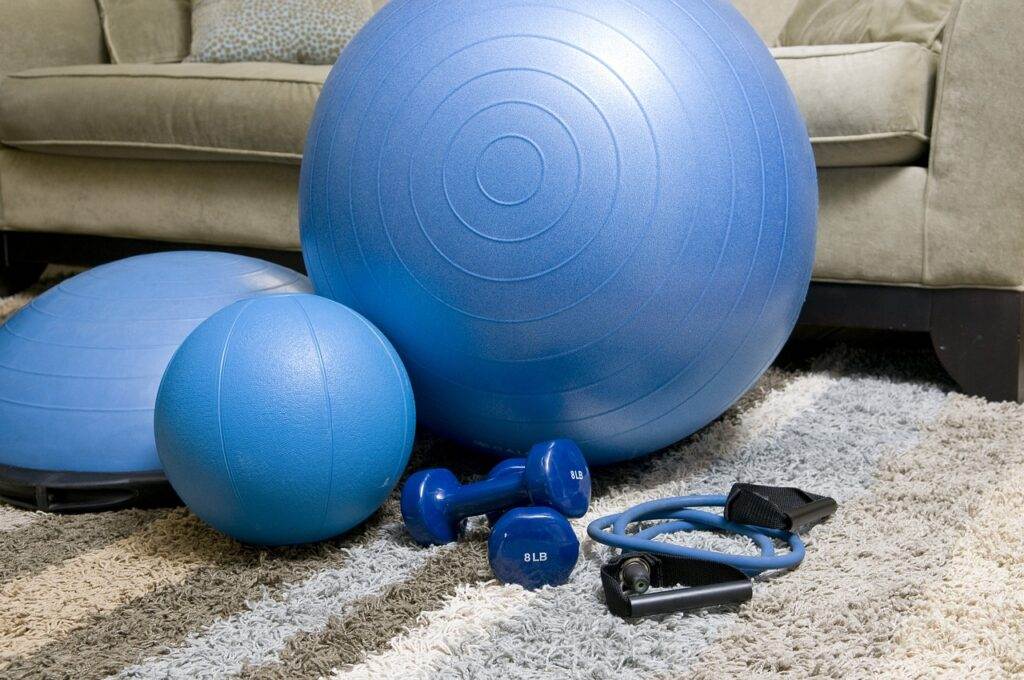
Dumbbells
Dumbbells are a versatile piece of equipment that can be used for various exercises, from bicep curls to squats. They come in different weights so that you can adjust the resistance to your fitness level. Investing in a set of dumbbells is a great way to add variety to your home workouts and build strength.
Resistance Bands
Resistance bands are another great piece of equipment for home workouts. They are lightweight, portable, and can be used to target different muscle groups. Resistance bands come in different resistance levels, so you can gradually increase the intensity of your workouts. They are also great for stretching and improving flexibility.
Exercise Ball
An exercise ball is a fun and effective way to add variety to your home workouts. It can be used for various exercises, including core work, balance training, and stretching. Exercise balls come in different sizes, so make sure to choose one that is appropriate for your height.
When choosing an exercise ball, make sure it is made from high-quality materials and can support your weight. You can also use an exercise ball as a chair, which can help improve posture and strengthen your core muscles.
Overall, these pieces of equipment are essential for anyone looking to get the most out of their home workouts. Incorporating dumbbells, resistance bands, and an exercise ball into your routine can build strength, improve flexibility, and achieve your fitness goals.
Specific Muscle Group Workouts
Targeting specific muscle groups to achieve the desired results is important for home workouts. Here are some effective workouts that target different muscle groups:
Upper Body
Push-ups are a classic exercise that targets the chest, shoulders, and triceps. To add variation, try diamond push-ups or decline push-ups. Try pull-ups or inverted rows using a sturdy horizontal bar for the back and shoulders. Dumbbell curls and tricep extensions also target the biceps and triceps.
Core
Planks are a great exercise for building core strength. To add variation, try side planks or plank jacks. Russian twists and bicycle crunches also effectively target abs and obliques.
Legs
Squats are a great exercise for targeting the quads, glutes, and hamstrings. To add variation, try jump squats or pistol squats. Lunges are also effective for targeting the quads and glutes.
Arms
Dumbbell curls and tricep extensions target the biceps and triceps, respectively. To add variation, try hammer curls or skull crushers.
Shoulders
Shoulder presses are great for targeting the deltoids. To add variation, try lateral raises or front raises.
Chest
Push-ups are a classic exercise that targets the chest. To add variation, try incline push-ups or chest flies using dumbbells.
Back
Pull-ups are a great exercise for targeting the lats and upper back. Try chin-ups or inverted rows using a sturdy horizontal bar to add variation.
Glutes and Hamstrings
Squats are a great exercise for targeting the glutes and hamstrings. To add variation, try jump squats or pistol squats. Romanian deadlifts are also effective for targeting the hamstrings.
Forearms
Farmer’s walks are a great exercise for building forearm strength. To add variation, try using heavier weights or walking on your fingertips.
Lower Back
Supermans are a great exercise for targeting the lower back. To add variation, try holding the position for longer periods of time or lifting the arms and legs simultaneously.
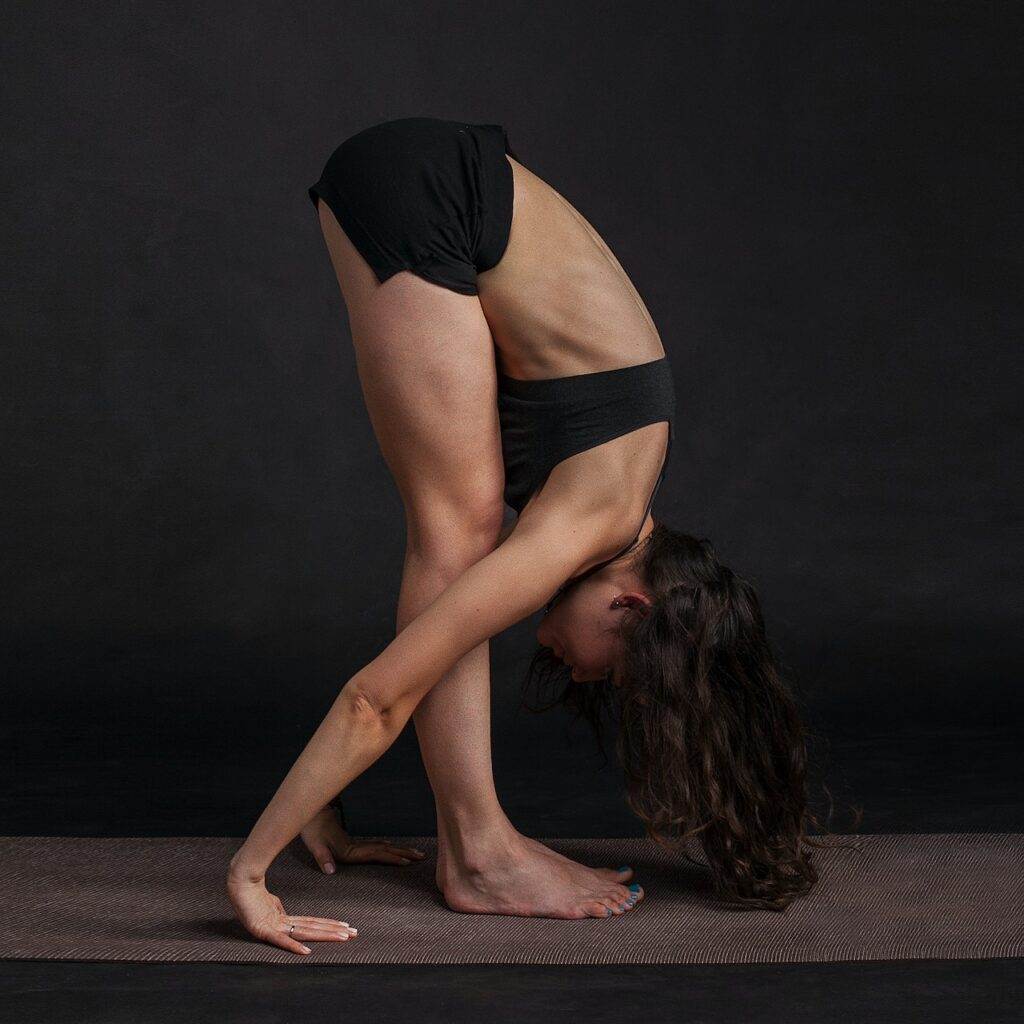
Advanced Home Workouts
As someone who has been doing home workouts for a while, I know it can be easy to fall into a routine and stop challenging yourself. This is where advanced home workouts come in. They are designed to increase the difficulty of your workout and help you build muscle, balance, and stability.
One way to make your home workout more advanced is to add weights. You can use dumbbells or resistance bands to increase the resistance of your exercises and challenge your muscles in new ways. This will help you build muscle and increase your overall strength.
Another way to make your home workout more advanced is to focus on balance and stability. This can be done by incorporating exercises that require you to balance on one leg or using unstable surfaces like a balance board or stability ball. These exercises will help you improve your balance and stability, which can help prevent injuries and improve your performance in other activities.
To build muscle, you can incorporate exercises that target specific muscle groups. For example, you can do squats and lunges to target your legs, or push-ups and pull-ups to target your chest and back. You can build muscle more effectively and efficiently by targeting specific muscle groups.
Advanced home workouts are a great way to challenge yourself and take your fitness to the next level. By incorporating weights, focusing on balance and stability, and targeting specific muscle groups, you can build muscle, increase your strength, and improve your overall fitness.
Home Workout Programs
I have found that home workout programs can be a great way to stay fit and healthy without leaving the comfort of your home. Many different programs are available, each with unique benefits and drawbacks.
One popular program is the Beachbody On Demand program, which offers a wide range of at-home workouts that can be streamed online. This program includes everything from yoga and Pilates to high-intensity interval and strength training. Professional trainers lead the workouts, which can be customized to fit your fitness goals.
Another popular program is the P90X program, a 90-day program that includes a variety of challenging workouts, including cardio, strength training, and yoga. This program is designed to help you build muscle, burn fat, and improve your fitness.
For those who are looking for a more low-impact workout, the PiYo program may be a good option. This program combines Pilates and yoga to provide a gentle full-body workout on your joints. The workouts are designed to help you improve your flexibility, strength, and balance.
No matter which program you choose, it’s important to remember that consistency is key when it comes to seeing results. It’s also important to listen to your body and make modifications as necessary to avoid injury.
Overall, home workout programs can be a great way to stay fit and healthy without leaving your house. With so many different programs available, there is something for everyone, whether you’re looking for a high-intensity workout or a more gentle, low-impact option.
Diet and Nutrition for Home Workouts
As someone who regularly works out at home, I understand the importance of proper diet and nutrition. What you eat can significantly impact your energy levels, recovery time, and overall fitness progress. Here are some key considerations when it comes to diet and nutrition for home workouts:
Macronutrients
It’s essential to ensure you get enough of the three macronutrients: protein, carbohydrates, and fat. Protein is especially important for muscle recovery and growth, so make sure you’re incorporating plenty of lean protein sources into your diet, such as chicken, fish, tofu, and lentils. Carbohydrates are also important for energy, so don’t be afraid to include healthy sources like sweet potatoes, brown rice, and quinoa in your meals. And while fat often gets a bad rap, it’s crucial for hormone regulation and brain function, so make sure you include healthy fats like avocado, olive oil, and nuts in your diet.
Hydration
Staying hydrated is crucial for anyone who works out, and it’s especially important when you’re exercising at home. Ensure you drink plenty of water throughout the day, and consider adding an electrolyte supplement to your routine if you’re sweating heavily during your workouts.
Meal Timing
When you eat can be just as important as what you eat. Aim to eat a meal or snack containing protein and carbohydrates within 30 minutes of finishing your workout to help kickstart recovery. Spacing out your meals and snacks throughout the day can help keep your energy levels steady and prevent overeating.
Supplements
While it’s always best to get your nutrients from whole foods, supplements can be a helpful addition to your diet. Whey protein powder can be a convenient way to get extra protein, while creatine has been shown to improve muscle strength and endurance. Just be sure to talk to your doctor before starting any new supplements to ensure they’re safe for you.
Overall, a balanced diet with plenty of whole foods and adequate hydration is key for anyone looking to get the most out of their home workouts. By paying attention to your nutrition, you’ll be able to feel stronger, more energized, and ready to take on whatever challenges come your way.
Common Home Workout Exercises
When it comes to home workouts, many exercises are commonly used. These exercises can be done with little to no equipment, making them perfect for those who don’t have access to a gym or who prefer to work out at home. This section will cover some of the most common home workout exercises.
Lunges
Lunges are a great exercise for working your lower body. They target your glutes, quads, and hamstrings. To make a lunge, start by standing with your feet hip-width apart. Take a step forward with one foot and bend your knee until your thigh is parallel to the ground. Your back knee should be hovering just above the ground. Push off with your front foot to return to the starting position and repeat on the other side.
Squats
Squats are another great exercise for your lower body. They target your glutes, quads, and hamstrings, as well as your core. To squat, stand shoulder-width apart and your toes pointing slightly outward. Bend your knees and lower your hips as if sitting back in a chair. Keep your chest up and your weight in your heels. Push through your heels to stand back up.
Resistance Exercises
Resistance exercises are great for building strength and toning your muscles. They can be done with resistance bands, dumbbells, or even household items like water bottles or cans of food. Some common resistance exercises include bicep curls, tricep extensions, and shoulder presses.
Bench Exercises
If you have a bench or sturdy chair, you can use it for various exercises. Bench dips are a great exercise for your triceps. Sit on the edge of the bench with your hands next to your hips. Slide your bottom off the bench and lower yourself until your elbows are at a 90-degree angle. Push back up to the starting position. You can also use a bench for step-ups or box jumps.
Walking and Walking Lunges
Walking and walking lunges are great for getting your heart rate up and working your lower body. Walk around your house or yard, or lunge down a hallway. Step forward with one foot and lower your body until your thigh is parallel to the ground to make a walking lunge. Push off with your front foot and bring your back foot forward to take another step.
Bodyweight Squats
Bodyweight squats are a great exercise for building lower body strength. To do a bodyweight squat, stand with your feet shoulder-width apart and your toes pointing slightly outward. Bend your knees and lower your hips as if sitting back in a chair. Keep your chest up and your weight in your heels. Push through your heels to stand back up.
Chair Squats
If you don’t have the flexibility to do a full squat, you can try a chair squat. Stand in front of a sturdy chair with your feet shoulder-width apart. Lower your hips back and down until you touch the chair with your bottom. Push through your heels to stand back up.
Stationary Lunges
Stationary lunges are a great exercise for working your lower body. Start by standing with your feet hip-width apart to make a stationary lunge. Take a step forward with one foot and bend your knee until your thigh is parallel to the ground. Your back knee should be hovering just above the ground. Hold this position briefly before pushing off with your front foot to return to the starting position. Repeat on the other side.
Bicycle Crunches
Bicycle crunches are a great exercise for working your abs. Lie on your back with your hands behind your head and your knees bent. Lift your shoulders off the ground and bring your right elbow to your left knee. Straighten your right leg as you twist your torso to bring your left elbow to your right knee. Continue alternating sides.
Dips
Dips are a great exercise for your triceps. You can do dips using a sturdy chair or bench. Sit on the edge of the chair or bench with your hands next to your hips. Slide your bottom off the chair and lower yourself until your elbows are at a 90-degree angle. Push back up to the starting position.
Reverse Crunches
Reverse crunches are a great exercise for your lower abs. Lie on your back with your hands by your sides and your legs bent at a 90-degree angle. Lift your hips off the ground and bring your knees towards your chest. Lower your hips back down to the ground and repeat.
Creating a Workout Space at Home
Having a designated workout space at home is important to stay fit and healthy. It doesn’t have to be a large room or a fancy gym, but it should be a place where you feel comfortable and motivated to exercise. Here are a few tips for creating a workout space at home:
Choose the Right Location
The first step is to choose the right location for your workout space. If you have a spare room, that’s great, but if not, you can use a corner of your living room or bedroom. Make sure the space is well-ventilated and has enough natural light. Consider adding a “Do Not Disturb” sign to prevent interruptions if you use a room with a door.
Clear the Clutter
Before setting up your workout space, clear out any clutter or unnecessary items. This will help you focus on your workout and avoid distractions. If you’re using a corner of your living room, consider using a room divider or a screen to create a separate space.
Invest in the Right Equipment
You don’t need a lot of equipment to get a good workout at home, but a few key items can make a big difference. Depending on your fitness goals, you may want to invest in a yoga mat, resistance bands, dumbbells, or a stability ball. You can also use household items like chairs, towels, and water bottles as makeshift workout equipment.
Make it Comfortable
Finally, make your workout space as comfortable as possible. Add a few plants or some artwork to make the space more inviting. Use a fan or air conditioning to keep the room cool during your workout. If you’re using a corner of your living room, consider adding a rug or some floor cushions to make the space more comfortable.
By following these tips, you can create a workout space at home that’s comfortable, convenient, and motivating. With a little creativity and effort, you can stay fit and healthy without ever leaving your house.
Benefits of Home Workouts over Gym
As someone who has tried both home workouts and gym workouts, I can confidently say that there are many benefits to working out at home. Here are a few reasons why:
Convenience
One of the biggest benefits of home workouts is the convenience factor. When you work out at home, you don’t have to worry about commuting to the gym, finding a parking spot, or waiting for equipment to become available. You can roll out of bed and start your workout. Plus, you can fit in a quick workout whenever you have a spare moment, without having to plan your day around gym hours.
Cost
Another advantage of home workouts is the cost savings. Gym memberships can be expensive, especially if you’re paying for a high-end gym with many amenities. You don’t have to pay membership fees when working out at home. You can invest in basic equipment, like dumbbells or resistance bands, and get a great workout without breaking the bank.
Privacy
Working out at home also offers more privacy than going to the gym. Some people feel self-conscious about working out before others, especially when starting out or trying a new exercise. When you work out at home, you can exercise peacefully without worrying about anyone watching or judging you.
Flexibility
Finally, home workouts offer more flexibility than gym workouts. You can choose the exercises that work best for you, without worrying about whether the gym has the right equipment. Plus, you can tailor your workouts to your own schedule and preferences, without following a class schedule or waiting for a certain machine to become available.
Overall, while there are benefits to going to the gym, I’ve found that home workouts offer a convenient, cost-effective, private, and flexible way to stay in shape.
Frequently Asked Questions
What are some effective home workout programs?
Many effective home workout programs are available, such as P90X, Insanity, and Beachbody On Demand. These programs offer a variety of workouts that can help you achieve your fitness goals from the comfort of your own home.
What are some at-home workouts to help with weight loss?
Some at-home workouts that can help with weight loss include cardio exercises such as jumping jacks, high knees, and burpees. Strength training exercises such as squats, lunges, and push-ups can also help increase muscle mass and boost metabolism.
Which is the best home workout app?
Many excellent home workout apps, such as Nike Training Club, FitOn, and 7 Minute Workout, are available. The best app for you depends on your fitness goals and preferences.
What are some beginner-friendly at-home workouts?
Some beginner-friendly at-home workouts include yoga, Pilates, and bodyweight exercises such as planks, wall sits, and modified push-ups. It’s important to start slowly and gradually increase your workouts’ intensity as you become more comfortable.
Can you achieve weight loss with home workouts?
Yes, you can achieve weight loss with home workouts. Consistency and dedication are key to achieving your fitness goals, whether at home or at the gym.
Is a 20-minute home workout enough for results?
A 20-minute home workout can be enough to see results, especially if you’re consistent and push yourself during each workout. However, it’s important to remember that the intensity and duration of your workouts will depend on your fitness level and goals.

